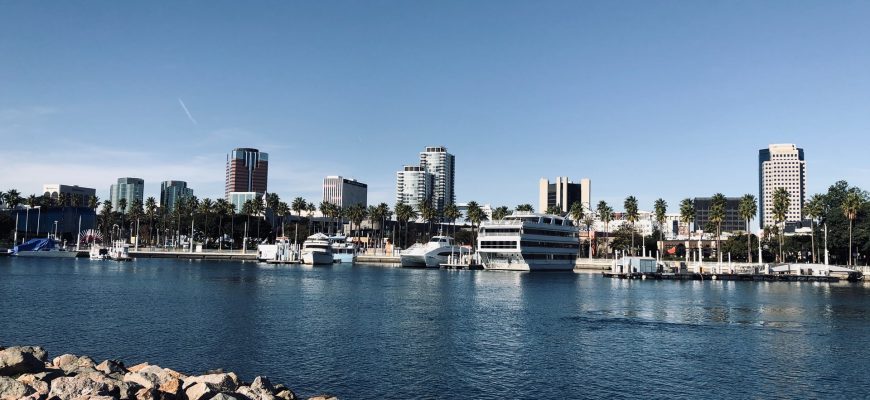
Mark Funkhouser is president of Funkhouser & Associates, LLC, an independent consulting firm and is also a NAPA Fellow.
Communities across the country are intensifying their conversations about the status of racial equity — or the lack thereof — in their cities and counties.
But Long Beach, California, has moved beyond rhetoric and actually produced a concrete plan. More than a year ago, it developed and approved a detailed list of exactly how the city intends “to address anti-Black racism, advance racial equity, and create a vision for Long Beach’s future where race does not determine social and economic outcomes.”
This work stands out for a few reasons. First, the plan was developed at a lightning-fast speed rarely seen in government. The city council unanimously adopted it just 11 weeks after George Floyd’s killing in May of 2020. The city was thorough too, convening 13 community listening sessions and four town halls to inform the process.
Second, the depth of the city’s Racial Equity and Reconciliation Initiative seems unparalleled in local government. It outlines more than 100 actions the city will take to address longstanding discrimination, covering everything from public safety to housing to health equity to environmental justice. “In partnership with our local community, we will create a healthier environment to support families, make our neighborhoods safer for everyone, and improve educational outcomes for all our students,” Mayor Robert Garcia said in a statement.
Third — and most interesting of all — is what happened in the year following the plan’s adoption. As COVID-19 relief dollars started flowing from Washington, D.C., to Long Beach, the city laid out a strategy to use those new resources to help implement the plan.
Leading the charge is Meredith Reynolds, a 15-year veteran of local government in Long Beach and other cities who is committed to disrupting the status quo. As special deputy city manager for recovery, she’s coordinating the implementation of the city’s $234 million Long Beach Recovery Act, working closely with community partners to ensure that the funds are helping residents, businesses, and workers most impacted by the fallout from the pandemic.
In this regard, Long Beach isn’t alone. From Philadelphia to Pinellas County, Florida, communities are rapidly creating “recovery coordinator” roles. The title varies by jurisdiction, but the bottom line is that local governments are recognizing the need for savvy, creative, connected, and progressive officials to help guide their economic recovery.
It’s a model every community should consider. Leaders who take these roles are the vanguards of what the next generation of government could become. These leaders understand that it not only makes sense to emphasize equity in allocating those federal funds but that equity is absolutely key to their communities’ recovery. After all, the economic response to the pandemic and the fight for racial equity are two of the most salient issues faced by local communities, and those issues are profoundly interconnected.
As Long Beach leaders see it, by tackling racial justice and equity head-on the city can chart a path to economic prosperity. In fact, that’s the only way they see the community thriving.
Putting this idea into action, Reynolds is bringing many moving pieces together, including collaborating with community leaders, city departments, and the feds. It’s a role that requires leadership, creativity, and a commitment to advancing equity — as well as attention to detail, given the notoriously rigorous rules that come with federal dollars.
Not every city or county has the size or politics of Long Beach. But even smaller communities can work to incorporate equity into their recovery. One example is Clear Creek County, Colorado, with a population of less than 10,000, where COVID-19 recovery coordinator Alyssa Dinberg is also addressing equity issues.
With $1.9 million heading Clear Creek’s way, Dinberg expects her county to use the funds to help address affordable housing and economic development in a community that’s largely relied on tourism. Dinberg described her role as helping to figure out how to “fill the gaps” in the community that COVID-19 caused. It’s a big job in a place where nearly one in five residents lives in poverty.
Of course, federal funds alone won’t help communities solve their economic or social equity challenges. As Dinberg told me, “If we want to create systemic change, it is going to cost a lot more than the $1.9 million we are getting.”
But those funds can be an essential catalyst by pushing cities and counties in the right direction, funding key programs that might otherwise have fallen by the wayside, and encouraging local leaders to think about these issues in a new way.
Taking this type of deliberate, equity-focused approach to spending public funds isn’t just the right thing to do. It’s the smart thing to do. Communities that aim to strengthen their economies must empower all residents to benefit from the recovery. It’s the only way we can make progress, and it’s only way we can build resilience against future crises.
Mark Funkhouser is president of Funkhouser & Associates, LLC, an independent consulting firm and a NAPA Fellow. He is also a former Mayor of Kansas City, Missouri.
